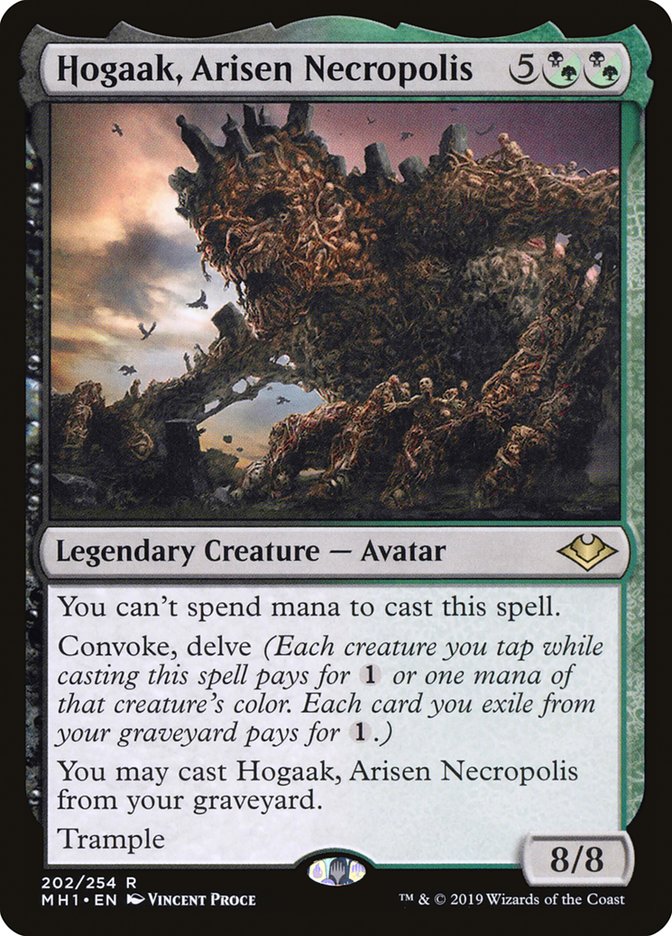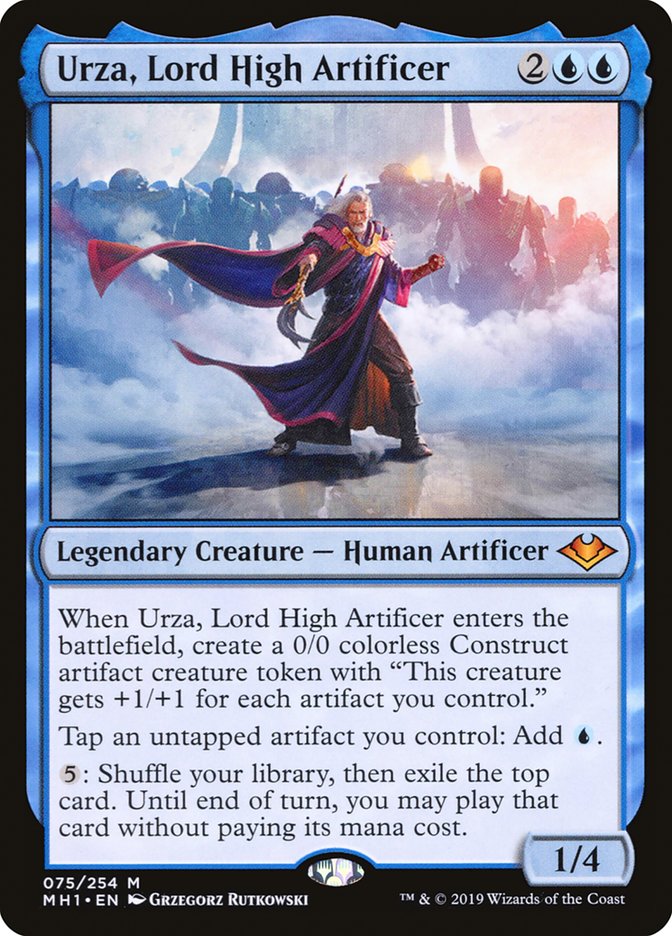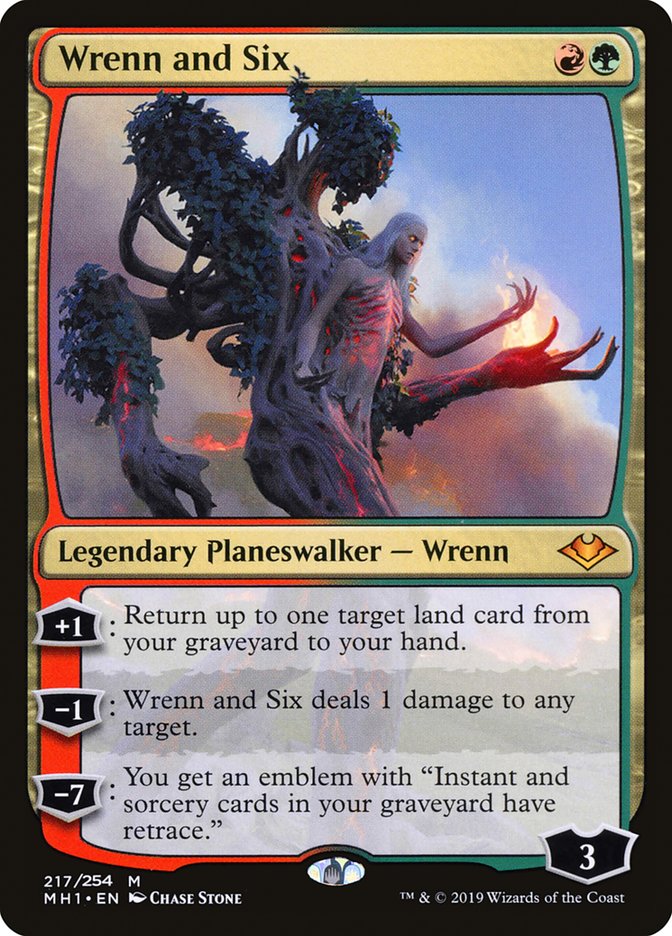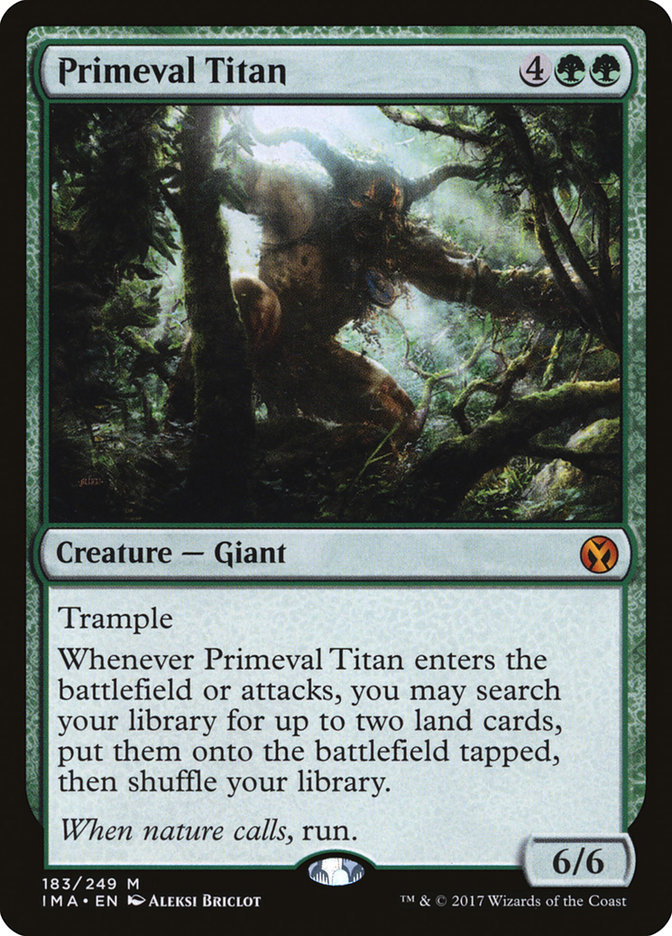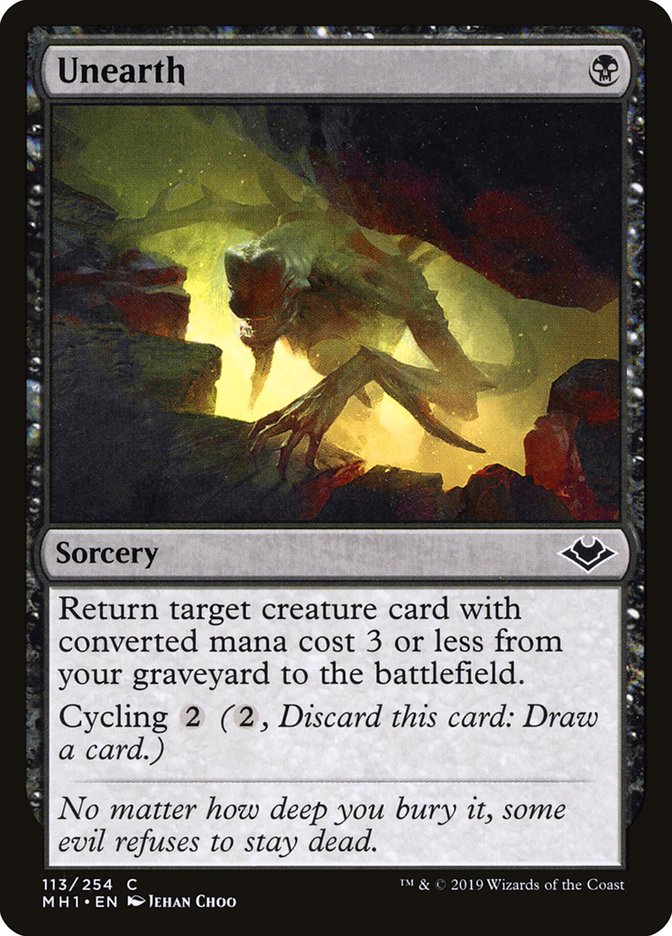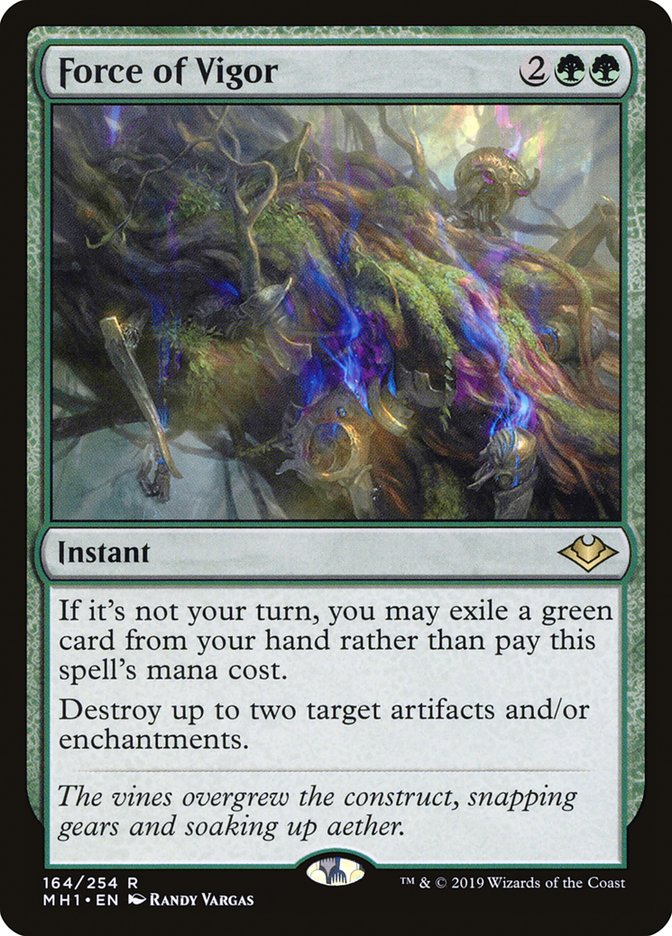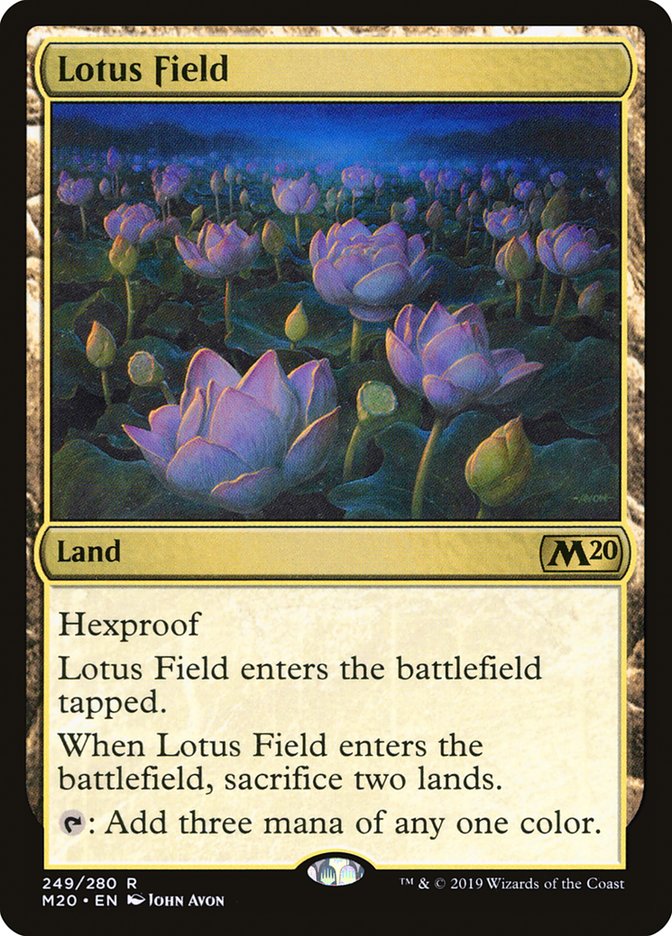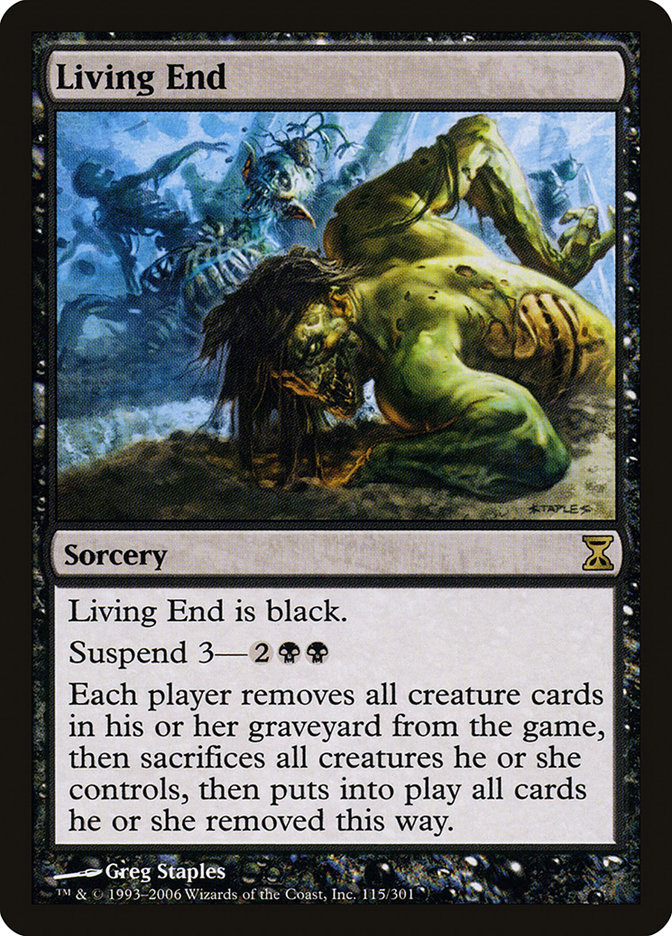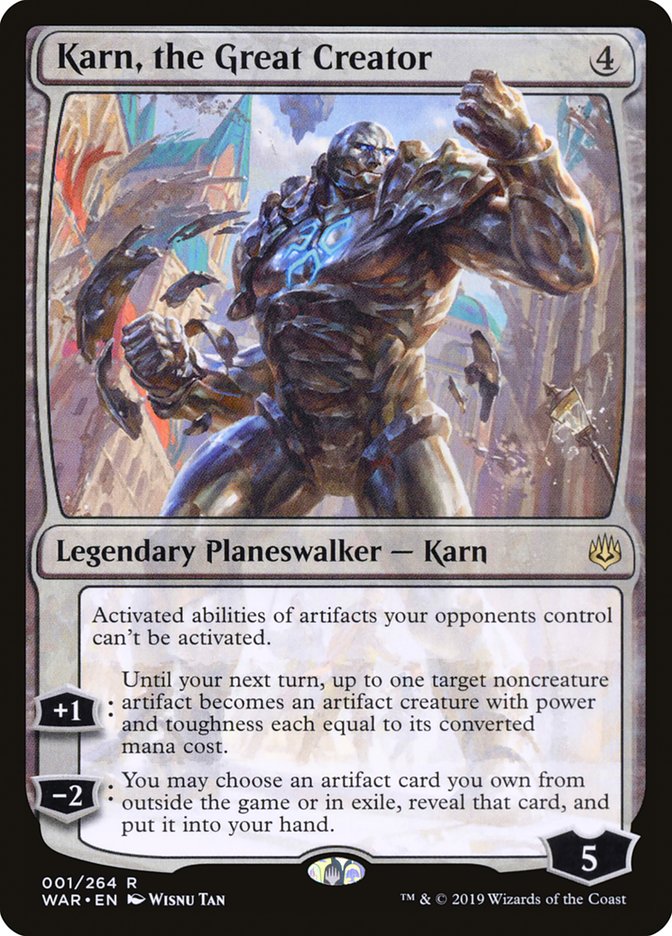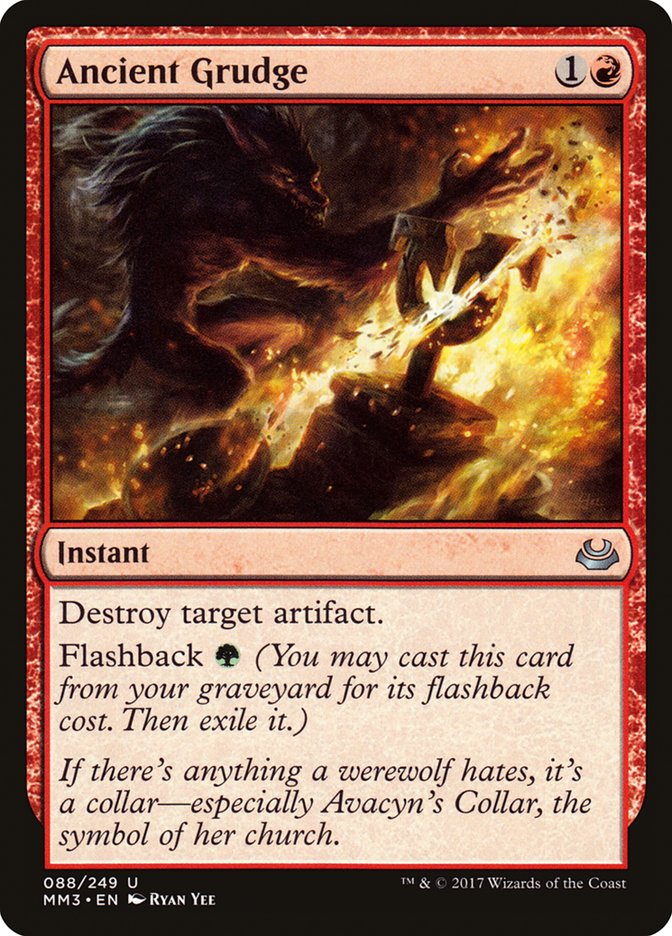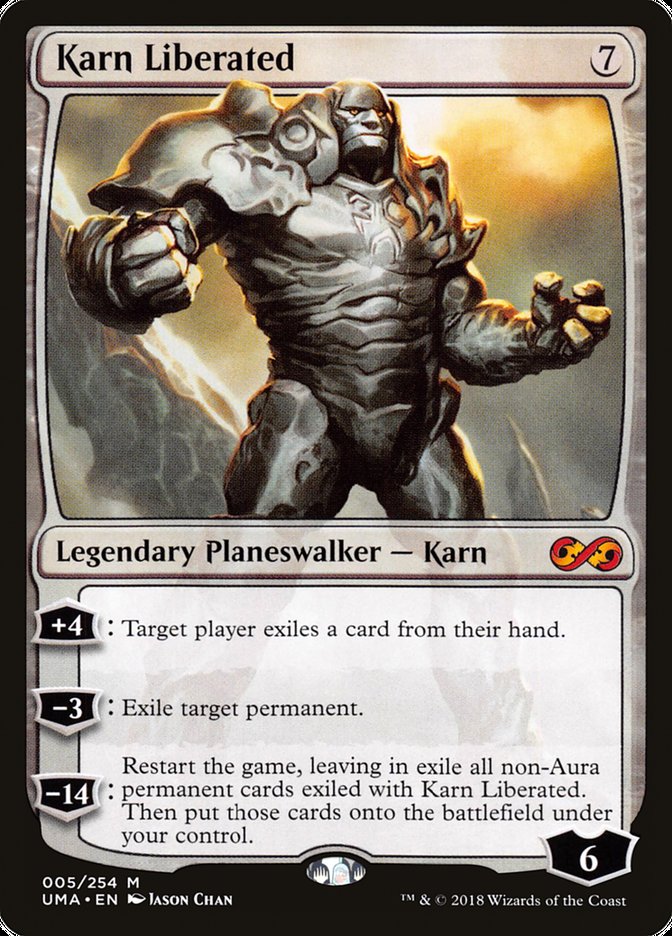Monday’s changes to the Modern Banned List promise a fundamentally new Modern format. Faithless Looting was the backbone of probably around 20-25% of the format even if Hogaak, Arisen Necropolis had been banned, and there are no clean replacements for it. While Izzet Phoenix’s success had started dropping since the release of Modern Horizons, it defined a lot of what was viable in Modern and its absence will require a deep reinvestigation of the format. Additionally, of course, Stoneforge Mystic has been a defining staple anywhere it’s legal, and certainly has implications for Modern.
To begin to understand the winners and losers of this change, I think you have to understand the constraints Izzet Phoenix was placing on the format. Dredge’s absence is also felt, but due to the flexible nature of graveyard hate, Dredge did less to drive deck selection and more to impact deck construction. Fundamentally, Izzet Phoenix required that if you would try to invest in creatures on the battlefield, you had to be able to remove Thing in the Ice, but at the same time, you couldn’t rely on removal because removal is ineffective against Arclight Phoenix, which offers a fast clock.
Answering Arclight Phoenixes individually, spending a card on each one, was almost always a losing battle. Instead, you needed to have a gameplan that didn’t lose to them. Cards like Ensnaring Bridge and Surgical Extraction fixed the problem, and outside of that, your best bet was just to race them, as we saw with decks like Hogaak, Dredge, Mono-Red Prowess, and arguably Mono-Green Tron, though that matchup is somewhat interactive.
The biggest categorical shift in the format that comes from these bannings is the elimination of recurring creatures as a primary angle that you must expect to be attacked from. This means trading resources directly is more effective, which means card advantage is more likely to be a relevant axis of engagement. These are the hallmarks of fair Magic, which is what this change promises for Modern.
Of course, we don’t know if it will deliver on this promise. The mere fact that people are trying to play fair is a fantastic reason to try not to play fair, and in general, not playing fair has been a better strategy. This creates an opportunity to catch people off-guard, but to do that, you need to find an unfair strategy that can beat both discard and versatile permanent destruction from Jund and countermagic, including Force of Negation from Azorius, which may actually be a tall order.
The final question is the role of big mana decks. Historically, when everyone’s trying to play fair, you can just go over the top of them very successfully with a deck like Mono-Green Tron, Amulet Titan, or Scapeshift. “How do you beat the other midrange decks without losing to Karn or Primeval Titan?” is a question a lot of players will find themselves asking in the coming weeks.
With that understood, here’s a list of the biggest winners as a result of Monday’s changes.
1. Stoneforge Mystic
Duh. Okay, not exactly a hot take, but I can’t leave it out of a list like this. Obviously it will go from no play to some play, which makes it an easy pick for having the biggest gains, but I also believe that Stoneforge Mystic will prove to be the real deal in Modern, and I’d go so far as to say that I expect it to see more play than any other card that has ever come off the Banned List in Modern.
This offers Azorius Control strategies a cheap threat that generates card advantage, pesters planeswalkers, and trumps creature strategies that don’t have a plan to deal with Batterskull. It offers Azorius Urza a more powerful way to fetch Sword of the Meek while doubling up on its secondary fair plan with Batterskull complementing Urza, Lord High Artificer’s Constructs and Sai, Master Thopterist’s Thopters. I expect Humans to radically decline in popularity because it’s hard to justify playing a white creature deck without Stoneforge Mystic. Midrange creature decks in any combination of white and two other colors will start to show up, at least until players figure out which ones are best.
I don’t know that it will make the format, worse, but when players who argued to unban Stoneforge Mystic pointed to games that were over on Turn 3 to show that Stoneforge Mystic wouldn’t do anything, I think they were mostly making the case because they wanted to play with it, not because they thought it would flop. And while there are games and matchups where it won’t matter, Stoneforge Mystic is powerful enough that it will radically warp the format.
2. Kolaghan’s Command
Is there a better answer to Stoneforge Mystic? Kolaghan’s Command is a fantastic card any time fair battles are being fought, and I have every reason to believe that answering both two-toughness creatures and especially artifacts will only become more important. Additionally, as the format shifts away from graveyard decks, it’s more likely that there’s room to do recursive things with Kolaghan’s Command. Eternal Witness, Snapcaster Mage, and maybe even Jace, Vryn’s Prodigy could show up in Kolaghan’s Command decks as a way to win midrange fights.
Stoneforge Mystic can function as the only creature in a deck, but for the most part, it’s better with others. Giver of Runes is an obvious pairing, as it protects your Stoneforge Mystic so that you can get Batterskull onto the battlefield and then win Batterskull fights. Moreover, it’s in a relatively small class of creatures in that it is a playable one-mana creature with two toughness, which means that it doesn’t die to Wrenn and Six, which is likely to become a very high priority in weeks to come. I’m not sure which other creatures will become popular out of the gates, but as a starting point for Kolaghan’s Command, killing Giver of Runes; Stoneforge Mystic; Jace, Vryn’s Prodigy; Scavenging Ooze; and Bloodbraid Elf isn’t a bad start. It also serves as a good way to finish off any planeswalker that used a minus ability, like Teferi, Time Raveler and Liliana of the Veil, both of which are certain to see plenty of play.
As I look to build new decks in the format, I find Kolaghan’s Command to be a huge draw to play red and black.
3. Urza, Lord High Artificer
When the format was all about non-interactive speed, Urza was still a great card, but the changes only improve the situation for the iconic Magic legend. Urza’s fair game is off the charts, in that you’re left with a very impactful creature even if your opponent can answer Urza itself, and it starts generating cards and mana if they’re forced to use removal on the Construct instead.
The fact that Urza also contributes to an infinite combo with Thopter Foundry and Sword of the Meek takes the deck from “outstanding fair deck” to “unfair deck with a strong fair backup plan,” which is a pretty solid foundation for a deck to mount a claim to top deck in the format.
In a world with cards like Collector Ouphe, Force of Vigor, and Kolaghan’s Command, it’s hard to play Mox Opal – hard enough that the card has dropped a lot in my rankings of the strongest cards in the format, but Arcum’s Astrolabe plays so well with Urza and Mox Opal that it feels like Urza can take advantage of Mox Opal without tremendous exposure to artifact hate. I wouldn’t be surprised if an Azorius Urza deck with Stoneforge Mystic and probably additional planeswalkers in the sideboard quickly rises to the top of this format.
4. Wrenn and Six
The other mythic from Modern Horizons that’s pushed enough to barely feel like a real Magic card. Throughout various formats, we’ve seen a variety of tests creatures need to pass to be playable based on how they line up against the most played answers in the format – the Jace, the Mind Sculptor test, which said that you couldn’t spend three or more mana on a creature unless it had hexproof or an enters-the-battlefield ability/cast trigger/haste because it was too devastating if your opponent followed it by casting Jace and bouncing your creature, is one of the more famous examples. We could realistically see a format where players go to great lengths to avoid playing creatures with only one toughness. Noble Hierarch; Glistener Elf; Dark Confidant; Thalia, Guardian of Thraben; Sakura-Tribe Scout; and all the others might just be too risky to play when they might immediately die to a two-mana planeswalker, especially if you’re on the draw. This is a highly format-warping effect, but that just might be the world we’re living in.
But Wrenn and Six is too powerful to be a victim of its own success. If it doesn’t have creatures to pick off, that’s not a problem for the card, which is more than happy to just generate value by returning lands from the graveyard and ticking up to its powerful ultimate.
So far, we’ve seen Wrenn and Six primarily in Jund, which is likely its best home, particularly given how well it plays with Liliana of the Veil, but I wouldn’t be surprised to see people start exploring Naya and Temur decks with the planeswalker as well.
5. Primeval Titan
While they were around, Faithless Looting decks were more appealing to me than Amulet Titan, but nothing I’ve written so far makes me think that Amulet Titan is poorly positioned moving forward. If Wrenn and Six and a rise of fair decks make it hard to play fast decks like Infect and Affinity, Amulet Titan isn’t sad to avoid those matchups, and it can easily win despite an opponent activating a planeswalker a few times or maybe connecting with a Sword of Whatever and Who Cares.
My optimism about Primeval Titan isn’t restricted to Amulet Titan. In addition to expecting that Scapeshift is well-positioned, I’m also interested in Primeval Titan as the top of a deck that’s structured very similarly to Jund, but probably using Sakura-Tribe Elder. Wrenn and Six helps make sure you hit your land drops, Kolaghan’s Command can return Sakura-Tribe Elder, and Primeval Titan allows you to go way over the top in the mirror, which I expect will be an extremely important matchup.
Additionally, Primeval Titan has an important new ally in Field of the Dead. If you cast Primeval Titan with six different lands, which is remarkably easy to do in Modern, you can get two copies of Field of the Dead with its trigger and make four Zombies. This turns Primeval Titan into a double Grave Titan that also ramps you and continues to make Zombies even if it dies. While Primeval Titan’s legacy is as the best finisher to hard-cast in ramp strategies, I think it might have a future as an all-star curve-topper in fair decks.
6. Unearth
This is my dark horse candidate, and I’m using it to make a larger point. Without Faithless Looting, Unearth inarguably takes a huge hit, as Faithless Looting was by far the best way to set up a Turn 2 Unearth, but there’s a good chance that the format will overreact to the removal of Faithless Looting and think, for at least a few weeks, that Faithless Looting was the only way to abuse the graveyard, which is far from true. While Unearth may have lost its best support card, it also may have been given a free pass to actually resolve, which might be even more important.
What are we doing with Unearth? Death’s Shadow, or more importantly, Ranger-Captain of Eos; Snapcaster Mage; Jace, Vryn’s Prodigy; Stoneforge Mystic; Seasoned Pyromancer; Eternal Witness; Fulminator Mage – I’m not sure exactly, but the options are there, and players were getting cards into their graveyard long before Faithless Looting was printed, and they’re not about to stop.
This is both a nod to Unearth specifically and a reminder not to overlook the graveyard, either as something you want to answer or as an option for strategic advantage when building your deck. I suspect an extremely short downtick in graveyard hate while there are fewer decks that rely on it exclusively, followed by a quick correction when players get ground out by recursion or lose to Thopter Foundry.
7. Teferi, Time Raveler
There were a few players who said their Azorius deck beat Hogaak, but everyone seemed to think that about whatever trash they justified playing, and the numbers are pretty clear that Hogaak was doing work to keep Azorius in check. While Path to Exile is a better-than-average removal spell against recursive creatures, it’s not a real gameplan against Vengevines and Bloodghasts because those threats didn’t cost your opponent a card in the first place, so any answer is a losing proposition. When the opponent isn’t just getting a bunch of free creatures that you can’t stop, Azorius is in a much better position to win attrition games.
My expectation is that Azorius will function largely as an answer to Mono-Green Tron and other spell-based strategies, but might struggle with Jund, which will likely stop it from taking over. Still, I think many players will accept their ~40% matchup against Jund and try to beat the rest of the field. Teferi, Time Raveler is generally a strong card, but it also helps mitigate the weakness to Bloodbraid Elf by preventing cascade, shuts down opposing counterspells in mirror matches, and pairs fantastically with Force of Negation by preventing your opponent from taking advantage of Force of Negation’s inability to be cast for free on your turn.
Teferi is also a reasonable midrange card that generates some value and a strong answer to Batterskull’s token.
8. Force of Vigor
I might be a little too high on this, since it’s better to spend mana rather than an extra card to answer something if the format is largely about card advantage and you’ll want cards that answer single pieces of Equipment fairly often, rather than answering two things, but I’ve just been so impressed with Force of Vigor in playing with it. It trades at such a fantastic advantage in terms of tempo and mana, and any time you destroy two things it’s usually strategically devastating to whatever your opponent was doing.
This may be awkward to rely on as an answer to Stoneforge Mystic, but the ability to spend all your mana developing and potentially make them skip a turn they thought they were safe to connect with a piece of Equipment can absolutely swing a game. More importantly, it’s a fantastic card against Urza, which, as I’ve mentioned, I expect to see a lot of. It also happens to be a pretty good hedge in case anyone turns to Selesnya Hexproof, which is actually a remarkably reasonable idea, all things considered, in that the creatures don’t die to Wrenn and Six and the deck has historically been pretty good at beating up on other creature decks.
Some honorable mentions and decks to watch:
- Lotus Field and Twiddle Storm in general. This deck is pretty good at ignoring everything that I talked about that’s going on here and this is the sort of deck I’d look at to fundamentally break the impending narrative of the format.
- Living End. This is another deck that historically trumps any sort of midrange creature nonsense, but, like, good luck taking a game off the Teferi / Force of Negation decks.
- Karn, the Great Creator. This card loves a fairer format but doesn’t necessarily like a more creature-heavy format. Definitely one to keep an eye on.
- Snapcaster Mage. While this is a one-toughness creature, given that it has flash and generates immediate value, it’s not clear that it has a Wrenn and Six problem as much as Wrenn and Six might find itself with a Snapcaster problem, and Snapcaster Mage definitely gains when fair Magic is being played and pairs reasonably well with Stoneforge Mystic. Honestly, it was pretty unfair to Snapcaster not to include it in the actual Top 8.
- Ancient Grudge. If there’s a better answer to Stoneforge Mystic than Kolaghan’s Command, it’s probably this, and it’s also at least as strong against Urza and Force of Vigor. Which to include in the Top 8 was a hard choice, but I went with the more interesting card, which was certainly not fair to Ancient Grudge if I were trying to strictly adhere to hard numbers. Grudge is almost certainly the better card in the format, unless answering enchantments becomes more important than I think it most likely will.
- All of Mono-Green Tron, but not really any card in particular.


